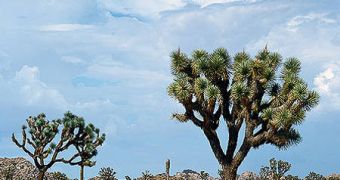The growing effects of climate change and global warming have prompted a lot of companies and other entrepreneurs to start investing in renewable energy, such as solar power and wind farms. However, it would seem that a new problem is now emerging, namely the fact that large amounts of solar panels, scheduled to be constructed for example in the American Mojave Desert, could severely disrupt the fragile ecosystems in the area. The small plants and animals that have developed and adapted to this extremely hostile environment over millions of years are now at risk of being wiped out by expanding human constructions in areas where only a few years ago there were none.
“It's certainly going to damage some of the ecology. I think that's a trade-off we have to accept. It's part of becoming less reliant on oil, and more reliant on solar and wind power. I think they should take into account how the redistribution of resources in general is going to affect ecosystems,” Cal State Fullerton biologist Darren Sandquist says. The expert has analyzed the influence that railroad systems had on the desert when they were first constructed, and has concluded that the man-made structures have drastically altered the way in which water used to flow through the land.
That is to say, regular flows were diverted or collected in single streams, which significantly altered the types of plants that were able to grow in specific areas. Naturally, the animals in those regions were also affected, as their main source of food, the plants, began to die out. Thus, the entire ecosystem was reshaped by something as simple as a railroad. A similar situation can now be seen in Africa, where roads severely limit the movements that elephants make, as the animals prefer staying off them and thus become separated or confined to regions that cannot support them.
“Anybody who drives through the desert notices the size of plants. Right next to the road, the plants are much larger. Studies have shown the dust on surfaces of leaves significantly reduces the photosynthetic ability of plants. Productivity decreases. One of the most important living structures on the surface are biotic crusts. They don't extend more than a few millimeters below the surface. Just by being there, they hold the dirt and silt in place,” Sandquist adds.
He explains that the removal of this microscopic layer can lead to extremely powerful and massive sand storms in the area, which will severely reduce the electricity production and could even damage the structures themselves. Sand moving at a high speed and in large quantities can create a very harsh surface that will scratch the solar mirrors and reduce their output even after the storm is gone.

 14 DAY TRIAL //
14 DAY TRIAL //